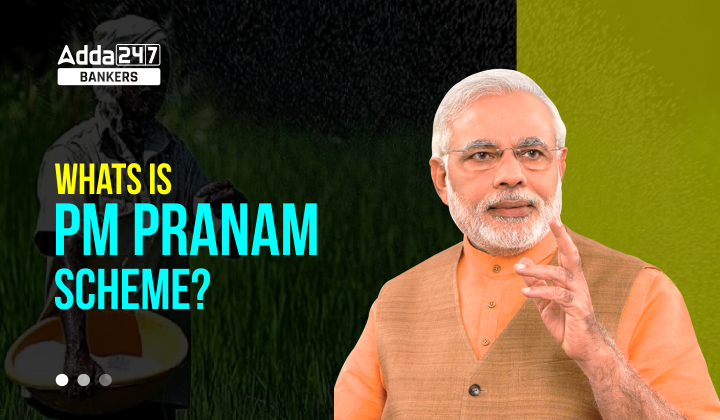The Centre plans to introduce a new scheme – PM PRANAM, which stands for PM Promotion of Alternate Nutrients for Agriculture Management Yojana.
This scheme has been only proposed, final rules and regulation will be updated soon.
What is the aim of the PM PRANAM Scheme?
- In order to reduce the use of chemical fertilisers in India, the Union government plans to introduce a new scheme – PM PRANAM and it will achieve this aim by incentivizing states.
- The proposed scheme intends to reduce the subsidy burden on chemical fertilisers, which is expected to increase to Rs 2.25 lakh crore in 2022-2023, which is 39% higher than the previous year’s figure of Rs 1.62 lakh crore.
Where the PM PRANAM Scheme was proposed?
- PM PRANAM Scheme was proposed during the National Conference on Agriculture for Rabi Campaign that took place on September 7, 2022.
What is the need of PM PRANAM Scheme ?
- The recent trends has seen a huge increase in the use of chemical fertilisers to increase the agriculture supply.
- There are four important fertilisers : Urea, DAP, MOP and NPK.
The requirement of these four fertilisers – Urea, DAP, MOP, and the NPK – increased by 21% i.e. from 528.86 lakh metric tonnes in 2017-18 to 640.27 lakh metric tonnes (LMT) in 2021-22. This data was given in the parliament in august 2022. - Thus, the Centre intends to cut down on the intense usage of fertiliser and promote alternative fertilisers.
Note :
DAP: Diammonium Phosphate
MOP: Muriate of potash
NPK: Nitrogen Phosphorus, Potassium
How the market of Chemical fertilisers work ?
- In the case of urea, the government fixes the MRP (Maximum Retail Price) and compensates the manufacturers for the difference between the MRP and the production cost.
- The prices of non-urea fertilisers like DAP and MOP are fixed by private companies and the government provides them a fixed amount of subsidy.
- Farmers buy fertilisers at MRP.
How the PM PRANAM scheme will work?
- The scheme will not have a separate budget and will be financed by the “savings of existing fertiliser subsidy” under schemes run by the Department of fertilisers.
- States are provided subsidy for the fertilisers, If they saves that subsidy, 50% subsidy savings will be passed on as a grant to the state.
- 70% of the grant provided under the scheme can be used for asset creation related to technological adoption of alternate fertilisers and alternate fertiliser production units at village, block and district levels.
- The remaining 30% grant money can be used for incentivising farmers, panchayats, farmer producer organisations and self-help groups that are involved in the reduction of fertiliser use and awareness generation.
How performance of various state will be compared?
- Government will compare a state’s increase or reduction in urea in a year, to its average consumption of urea during the last three years. Data available on a fertiliser Ministry dashboard, iFMS (Integrated fertilisers Management System), will be used for this purpose.
What is iFMS?
- Integrated Fertilizer Management System (iFMS) was launched in June 2016 which is a comprehensive, all-inclusive system covering all functionalities in the fertilizer supply chain.
How the supply of fertilisers in the market is ensured by the government?
- The Department of Agriculture and Farmers Welfare assesses the requirement of fertilisers each year before the start of the cropping season, and informs the Ministry of Chemical and fertilisers to ensure the supply.
Other posts
GoI implements “Prime Minister’s Employment Generation Programme” scheme
Union Minister Dharmendra Pradhan launched “Ramakrishna Mission’s Awakening Programme”



 GA Capsule for SBI Clerk Mains 2025, Dow...
GA Capsule for SBI Clerk Mains 2025, Dow...
 The Hindu Review October 2022: Download ...
The Hindu Review October 2022: Download ...
 SBI PO Syllabus 2025, Check Subject Wise...
SBI PO Syllabus 2025, Check Subject Wise...


